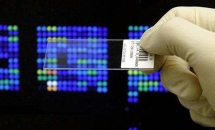Acquired Immune Deficiency Syndrome (AIDS) is an infectious disease caused by the Type 1 Human Immune-deficiency Virus (HIV-1). The first cases were described in 1981-82 in San Francisco and New York, and soon the so-called "20th century epidemic" spread throughout the world. The origin of the virus is what is known as the Simian Immune-deficiency Virus (SIV), low-pathogenic for non-human primates. The inter-species jump had taken place some 30-50 years before. HIV-1 was identified in 1983, and from that moment on a diagnosis was available (presence of antibodies or positive serology in infected persons), and the natural history of the disease could be defined. After the so-called "acute infection" or "primary infection" with asymptomatic frequency, the carrier enters a long period of equilibrium that reflects the capacity of the person’s immune system to control the infection, and the capacity of HIV-1 to escape from same. During the following 3-10 years, an "exhaustion" of the immune system took place and infections and "opportunist" cancers emerged. Life expectancy was usually less than 1-2 years.
The first antiretroviral (zidovudine) was introduced in 1986, and continual, high-effectiveness antiretroviral treatment 10 years later (1996). In 2012, the life expectancy of a person infected with HIV-1 who is able to receive treatment and complies with same is similar to that of the general population, adjusted according to age and sex. It is highly unlikely that a person undergoing treatment, and responding well, will be able to transmit the virus. Therefore, the treatment is not only beneficial at the individual level for infected persons, it is also a weapon of public health for reducing rates of transmission, and therefore of new infections.
The best tool for preventing the spread of any transmissible disease of infectious origin is that of preventive vaccine. In the case of HIV-1 it has been proven that this is possible, though the effectiveness of current prototypes is still too low for this to be applied routinely.
Cycle: Challenges of the 21St Century the Voice of Medicine, II
Organized by: Residence for Researchers, Fundació Clínic Barcelona, IDIBAPS and RESA
